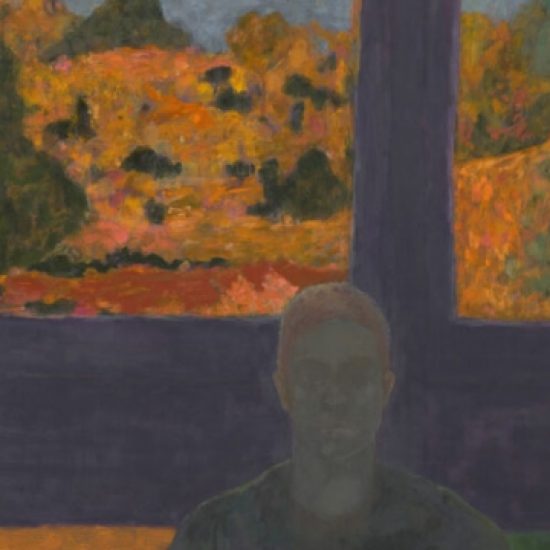With a bunch of shows opening this week in LA with the Frieze energy bringing the city a little extra oompf, we take a look at a show with a last chance of seeing: Shota Nakamura, light room, at Clearing.
Shota Nakamura’s ruminative images are largely occupied by mosaic landscapes and quiescent figures. Certain junctures in his palette produce a hyperreality that rages against the natural world. Any figural presence is apparitional, as though the human subject were merely an echo. Nakamura introduces the viewer to his experience of daily rituals, extracting the light as it blares through his studio or domestic windows then consigning its essence to oils on canvas. Echoes from childhood figure into the compositions too, as he conjures the dappled rays between leaves and his vantage point from the foothills of the Chichibu-Tama-Kai National Park. The elastic boundary between interior and exterior is well represented by Nakamura in his interweaving of personal narratives and painting-as-subject. Regarding his manner of production, Nakamura applies oils until something intuitively clicks and the painting lifts off the ground. He often arbitrates the surface in order to orient the perspective and formulate the composition’s spatial organization. Brushstrokes are left open so as not to render the objects too heavily. When working on a larger scale this is further dramatized, as Nakamura places colorfields at the forefront of his painterly concerns. In this format, the sensation of pigment is prioritized.
The painted experience of another can be absorbed by the viewer and, as such, quotations from figures such as Vuillard and Kirkeby figure into Nakamura’s visual world. Nakamura borrows a line here, a vibrational pattern there, yet remains faithful to his own particularized spirit. In several instances, his compositions were spurred by his prolonged engagement with specific paintings, such as Bonnard’s Le petit dejeuner (The Breakfast Table). However, the vertiginous path that follows the informative spark belongs entirely to Nakamura.
Each painting here orbits around a different story, individually constructed with discrete relational developments. This effort to track and establish allegiances between visual objects is primarily achieved through Nakamura’s attention to depth. Trees set beside one another and figures set within vast landscapes inform substantiate this effort. Within the confines of his built cosmology, Nakamura is constantly tracking elements that either block out or invite the eye into his composition.
In by the lake Nakamura offers a predominantly verdant lake scene that culminates at the bottom with the back of a figure’s neat head. He’s carefully implemented a horizon line that serves to push the viewer back perspectivally. Additionally, this work reaffirms the artist’s attraction to vertical orientation. The experience of looking is akin to that of reading a page: as the eye travels downward, more is clarified. In another image, a white table set at the painting’s lower edge, decorated with tableware and inscrutable fruits. This stabilizing tableau is embedded into a matrix of vegetation, all of which contributes to a grayscale landscape.
As Celia Paul elucidates in her autobiography, painting can be understood as “the language of loss.” In order to come to a substantiated visual experience, one must add, scrape, mourn, and repeat. Strengths and vulnerabilities are manifest in the arbitrations of line, form, and mood. Nakamura embodies this process as he drives his composition toward completion. In light room, a selection of new paintings converge to demonstrate the artist’s contemplative worldview.


